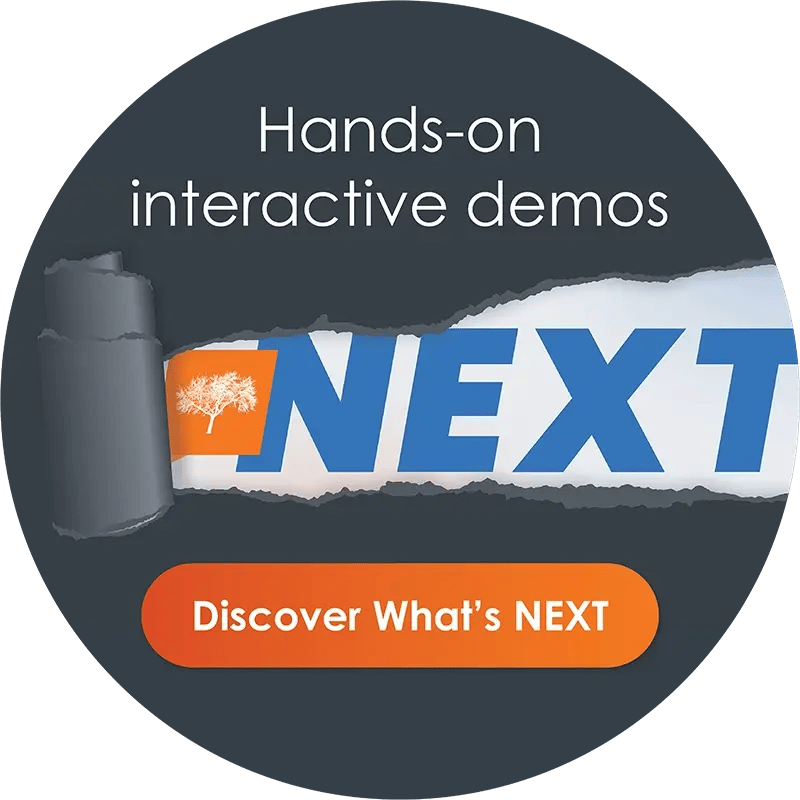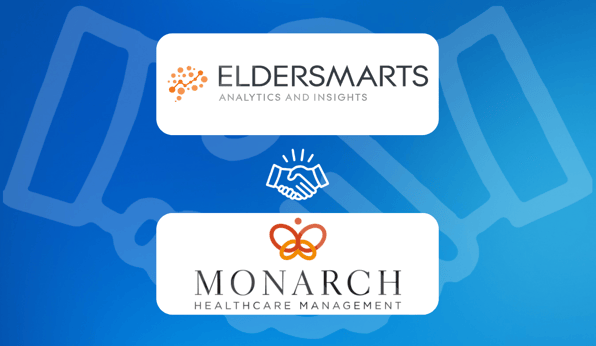Senior Living Software Adoption Over the Years

As a senior living community operator, you likely can’t imagine doing your job without the aid of technology. Even communities that aren’t on the cutting edge of digital solutions still rely on many software systems for record-keeping, communication, scheduling, and much more. Of course, it hasn’t always been that way, but senior living software has been evolving over many decades and has revolutionized the senior care landscape time and time again.
Senior living software adoption isn’t always easy, but once implemented, it works toward increasing operational efficiency, reducing errors, and making the senior living experience more positive for both staff and residents. Below, we’ll take a look at the history of senior living software, and what may lie ahead.
A Timeline of Senior Living Software Adoption
You probably take some of the technology you use for granted, and who can blame you? Senior living software is now an integral part of most communities, but of course, it hasn’t always been that way. Let’s take a look at how it started and how it’s going:
The Early Days: 1960s-1990s
It might surprise you to learn that the software, now known as EHR or electronic health records, started in the 1960s at the Mayo Clinic. Due to the extreme cost, it could only be used by hospitals that had substantial government funding. EHR as we know it today evolved throughout the 70s and into the 80s, when the first assisted living community was established. As EHR and other types of electronic records became more common, and the technology needed to support them advanced, more and more senior living communities adopted this system.
The Digital Revolution: 1990s-2000s
By the 90s, computers were in many homes, and the World Wide Web had made its presence known. Senior living and assisted living communities began budgeting for technology and started implementing different software programs to support their work.
This is also the era in which CRM, or customer relationship management, software was born. CRM platforms allowed businesses, including long-term care residences, to digitally input and store customer data, reducing errors and establishing strong relationships.
Electronic medication administration records, or eMAR, was established in the early 2000s. First adopted by hospitals and nursing homes, eMAR systems went on to be accessed and used by many senior living communities to customize care plans and ensure residents received the medications they needed.
The Rise of Specialized Solutions: 2010s-Today
Today, you can find EHR, eMAR, and CRM implemented at a majority of senior living communities. But software adoption for platforms that perform other functions remains scattered. It’s common to find many single-function solutions in any given senior living community. These specialized solutions can include:
- Acuity-based staff scheduling platforms
- Billing and point-of-sale solutions
- Family portals and communication systems
- Activity and engagement planning software
- Meal planning and senior dining platforms
… and much more. While specialized software solutions have the capability to solve many challenges widely faced by senior living communities, it can be challenging to adopt and integrate multiple platforms. This means that staff onboarding and training can be a time-consuming hassle.
The Future of Senior Living Software
Fortunately, senior living software adoption is being simplified. Consolidated, fully integrated systems are now available to make onboarding easier and more effective. At the same time, technology continues to advance in the realm of senior care. What can you expect to see in terms of technological growth?
- The use of wearables to monitor vitals, conduct daily check-ins, and watch for falls and accidents
- Technology enhanced by artificial intelligence
- Advancements in telehealth and remote care
- Greater use of data analytics for risk management
- Virtual reality and augmented reality used for engagement and communications
- “Smart” designs for facility management
- Sustainable technology leveraged to conserve resources and save money
How the Ability to Integrate Systems Changed the Game
Integration is a relatively new concept in the senior living software space. With the development of specialized solutions, many communities found they needed to adopt, train, and implement new programs at a dizzying pace. This involved building relationships with multiple vendors, managing different points of contact, training employees on multiple programs, and attempting to integrate platforms that may or may not be compatible. It also resulted in snowballing costs, as discounted trials and limited-time deals expired, leaving monthly fees and premium feature prices to pile up.
As some senior living software providers began actively listening to their consumers, they started to create all-in-one platforms, offering end-to-end solutions in a customizable and totally integrated package. This was one of the biggest game-changers in senior living software adoption. Integrated systems solved many of the biggest challenges in adopting new software. It reduced the time spent on training and onboarding, lessened the stress on employees, and lowered the risk of errors and mistakes across incompatible platforms.
A Closer Look at How Software Adoption Affected the Senior Living Industry
There are countless ways in which senior living software has revolutionized the landscape and irreversibly changed the way we care for older adults. Below, we’ll focus on two ways software adoption has improved senior living for both communities and residents:
Senior Living Software Adoption for Stronger Communities
Most senior living operators know that staffing is a difficult task. High turnover rates, staff burnout, and difficulty recruiting and retaining top talent are all common challenges. With the right senior software, communities can now gain greater workforce stability by making recruiting and hiring processes more efficient. By leveraging data and analytics, communities can predict staffing needs and optimize recruitment strategies so they can ensure they have the right people in the right place.
Senior Living Software Adoption for Healthier Residents
The widespread use of EHR and eMAR in senior living and assisted living communities has quite literally saved lives. Before eMAR, residents may have missed critical doses of necessary medications. But, as one eMAR case study shows, the ability to monitor and automate medication administration, refill ordering, and real-time reporting has led to increased well-being and quality of life for many residents.
Common Software Adoption Obstacles for Senior Living Communities
Of course, senior living operators know that it isn’t as simple as just acquiring the latest and greatest technology — it’s getting staff and resident buy-in and planning a seamless and hassle-free adoption and onboarding. But why is this such a challenge for some communities?
Resistance to Change
Change is constant, but it’s also hard. You might find that staff members who are used to one way of doing things are reluctant to learn how to do them another way. This is less common with younger employees who are overall more tech-savvy. For long-time staff members, you may experience pushback on anything that feels new and unknown. It’s important to create an implementation plan before notifying staff members of coming changes, and to communicate this plan clearly and effectively. Seek feedback throughout the onboarding process and reach out to employees who may need additional support.
Cost-Consciousness
New technology can be pricey, and you may meet some resistance when pitching it to leadership. They are, of course, right to have a budget in mind when evaluating any new software program. However, it can help to prove a cost-benefit analysis so they see how the new technology may save money and time in the long run. If you are in a community that already uses numerous software platforms, you may also find that by consolidating into one comprehensive solution, you’ll save quite a bit.
Time and Training
Whenever you adopt a new software, employees will need to undergo training and onboarding. If you’re juggling a multitude of different systems, this can be an overwhelming prospect. Beyond that, if the platforms you use aren’t integrated, employees will have to jump from one to another, leading to a greater risk of errors and mistakes. Comprehensive, consolidated solutions are better in that they simplify the training process and reduce the time needed to onboard.
Why Your Senior Living Community Should Adopt Eldermark NEXT
Technology will continue advancing and your senior living community needs to be ready for what’s ahead. When you trust a comprehensive, end-to-end solution like Eldermark NEXT, you can rest assured we’re working on pace with these advances and can keep you at the cutting edge of senior living. With simplified training and onboarding, you ensure seamless software adoption for your staff and swift implementation. See how Eldermark NEXT senior living software can put you ahead of the curve — book your custom demo today!




